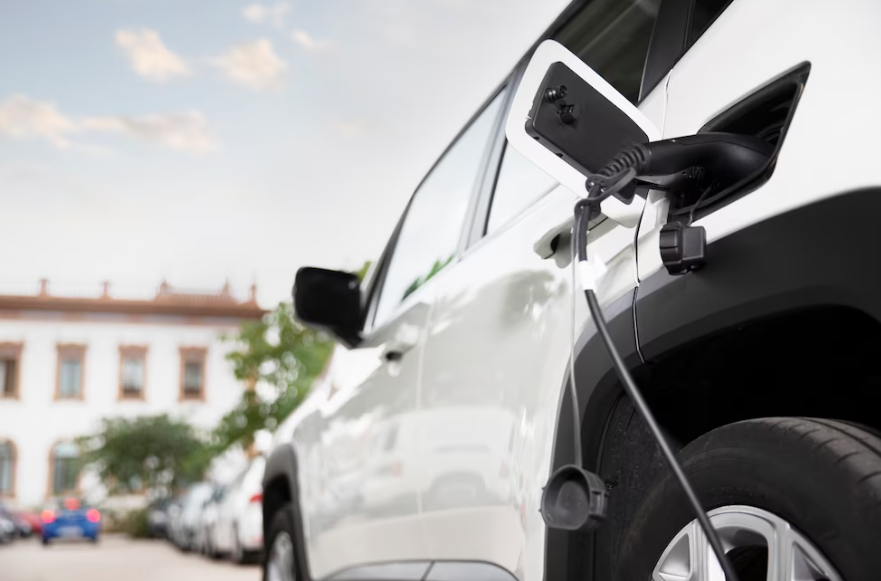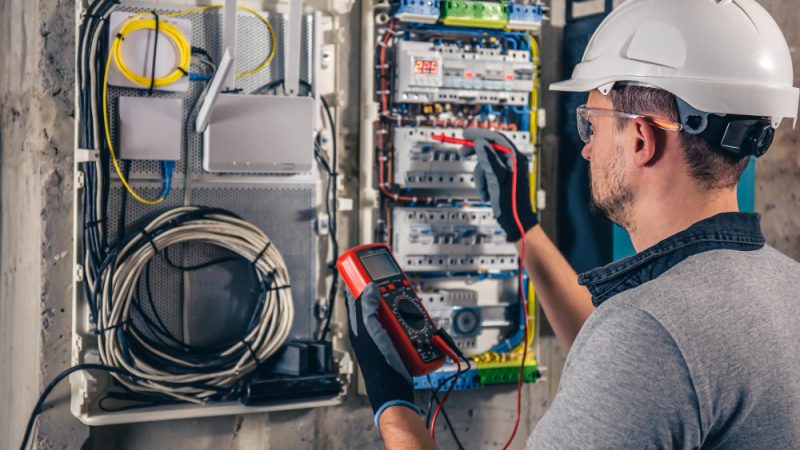Unlocking the Potential of Electric Vehicle Fleets: A Comprehensive Guide to EV Fleet Charging

The electrification of vehicle fleets has emerged as a promising solution to address environmental challenges and improve transportation efficiency. By adopting electric vehicles (EVs) in fleets, a number of significant benefits can be realized.
EVs are more environmentally friendly compared to internal combustion vehicles. By not emitting harmful exhaust gases and particulate pollutants, EVs contribute to improved air quality and a reduced carbon footprint. This is especially relevant in urban environments, where air pollution is a serious problem. They are also more energy efficient, which translates into lower energy consumption compared to combustion vehicles. Energy recovery during regenerative braking and the higher efficiency of the electric motor are key factors contributing to this advantage. By reducing energy consumption, EV fleet charging can achieve significant savings in long-term operating costs.
Another important benefit is the reduction in dependence on fossil fuels. Electric vehicles use electricity as a source of energy, which makes it possible to take advantage of renewable and clean sources. Doing so can reduce exposure to oil price volatility and contribute to long-term energy security.
Factors to take into account before implementing a recharging infrastructure
Before implementing a charging infrastructure for an electric vehicle fleet, it is crucial to take into account a number of key considerations. These factors can influence the design, efficiency and functionality of the charging system, and ensure an optimal experience for fleet users. Some of the key considerations include:
Capacity
It is important to assess the charging needs of the fleet and determine the capacity required to meet demand. This involves considering fleet size, electric vehicle range, and usage patterns.
Type of charging
There are different types of charging stations, from level 1 chargers (standard plug-in) to level 3 chargers (fast charging). It is critical to choose the right charging type based on the desired charging speed and fleet needs.
Location
Strategic location of charging stations is essential to ensure convenient and efficient access. There must be a balance between proximity to fleet operating routes and the availability of adequate electrical infrastructure.
Management and monitoring capabilities
Implementing a charging management system to monitor and control fleet charging can be beneficial. This can include functions such as charging scheduling, battery status monitoring, and charging optimization based on the electricity tariff.
Integration with renewable energy sources
Considering integrating renewable energy sources into the charging system can contribute to an even more sustainable fleet. This may include installing solar panels at charging facilities or purchasing certified renewable energy.
Infrastructure planning: How to design an efficient and scalable system to meet fleet needs.
Careful planning of the charging infrastructure is essential to ensure an efficient and scalable system that meets the needs of an electric vehicle fleet. When designing the charging infrastructure, the following aspects should be considered:
Demand analysis.
It is important to assess the charging demand of the fleet and determine the capacity required to meet it. This involves considering the number of electric vehicles in the fleet, their usage patterns and individual charging needs.
Types of charging stations
The appropriate types of charging stations should be selected based on the needs of the fleet. This may include Level 2 chargers for regular daily charging and Level 3 chargers for fast charging in cases of emergency or special needs.
Distribution of charging stations
Strategic distribution of charging stations is essential to ensure convenient access and equitable distribution of charging throughout the fleet. Vehicle operating routes and parking patterns should be considered to determine the optimal location of charging stations.
Electrical Infrastructure
An assessment of the existing electrical infrastructure should be conducted to determine if it is sufficient to support the fleet’s charging demand. If necessary, upgrades or improvements to the electrical system may be required.
Management and Monitoring
Implementing a load management and monitoring system can facilitate efficient management of fleet charging. This can include charging scheduling, monitoring battery status, and optimizing charging based on electricity rates.
Scalability
It is important to design a scalable charging infrastructure that can accommodate future fleet growth. This involves considering expandability and the flexibility to add new charging stations as needed.
Types of charging stations: Exploring the charging options available for electric vehicle fleet charging.
When it comes to charging electric vehicle fleets, there are different types of charging stations available to meet various needs. Below are some of the most common types of charging stations:
- Level 1 chargers – Level 1 chargers are the most basic and use a standard 120-volt plug. They are suitable for low power charging and can be used in household outlets. However, due to their low power, recharging may take longer.
- Level 2 chargers: Level 2 chargers are faster than Level 1 chargers and use a 240-volt outlet. They are ideal for everyday charging in commercial parking lots, gas stations or public charging facilities. They provide faster and more efficient charging.
- Level 3 (fast charge) chargers: Level 3 chargers, also known as fast charge chargers, offer the fastest charging available for electric vehicles. They use high-power direct current (DC) and can charge a vehicle in minutes rather than hours. However, these chargers typically require more advanced electrical infrastructure and can be more expensive to implement.
- Wireless chargers: Wireless chargers, also known as induction charging, eliminate the need for wires and plugs. They use electromagnetic fields to transfer energy from a charging plate on the ground to the receiving coil in the electric vehicle. These chargers offer convenience and ease of use, but their efficiency may be slightly lower compared to wired chargers.
Smart charging management: How to optimize fleet charging by using smart charging and scheduling technologies
Intelligent charging management is a key component in EV charging optimization. By using advanced charging and scheduling technologies, the following benefits can be achieved:
Scheduling
Charging scheduling allows fleet managers to set specific times for vehicle charging. This allows them to take advantage of cheaper electricity rates during off-peak periods and reduce electricity costs.
Smart charging
Smart charging systems can optimize load distribution based on several factors, such as grid capacity, individual vehicle needs, and user preferences. These systems can balance the load across multiple vehicles and dynamically adapt to changing grid conditions.
Integration with renewable energy sources
Intelligent load management can also facilitate the integration of renewable energy sources into the charging process. This involves scheduling recharging to coincide with periods of renewable energy generation, such as sunlight or wind, thus maximizing the use of clean energy.
Monitoring and tracking
Charge management systems can provide real-time data on vehicle charging status and energy consumption. This allows for accurate monitoring of fleet charging and identification of potential problems or inefficiencies.
Financial and cost considerations: Evaluating the economics of EV fleet charging
When implementing electric vehicle fleet charging, it is important to evaluate the associated financial and cost considerations. Some aspects to consider include:
Infrastructure costs.
Charging infrastructure installation costs can vary depending on the type and number of charging stations needed. This includes procurement and installation of charging equipment, as well as electricity costs and possible upgrading of existing electrical infrastructure.
Operating costs
In addition to initial installation costs, it is important to consider ongoing operating costs. This may include electricity costs, maintenance, and possible upgrades or repairs to the charging stations.
Fuel savings
By moving to an electric vehicle fleet, significant fuel cost savings are possible. Electric vehicles have a lower cost per mile compared to internal combustion vehicles, which can result in long-term savings.
Incentives and subsidies
Depending on location and government policies, incentives and subsidies may be available for the deployment of electric vehicle fleets and charging infrastructure. These programs can help reduce upfront costs and make fleet electrification more affordable.
Tips for a successful implementation of electric vehicle fleet charging
Successful implementation of electric vehicle fleet charging can be achieved by following success stories and best practices. Some tips and case studies to consider are:
Set clear goals: Before implementation begins, it is important to set clear and measurable goals for fleet electrification. This may include targets related to emissions reductions, cost savings or compliance with environmental regulations.
Planning and assessment: Conducting thorough planning and assessment of fleet needs and local conditions is critical. This includes assessing the technical and financial feasibility of the charging infrastructure, as well as considering the operational needs of the fleet.
Collaboration with partners and suppliers: Working in collaboration with trusted partners and suppliers can be beneficial. These may include charging service providers, energy companies, electric vehicle manufacturers, and organizations specializing in electric fleet solutions.
Continuous monitoring and evaluation: It is important to continuously monitor and evaluate the performance of the charging infrastructure and the efficiency of the electric fleet. This can help identify opportunities for improvement and make adjustments as needed.
Education and training: Providing education and training to drivers and fleet operations personnel is essential. This includes providing information on the benefits of electric driving, charging best practices, and proper maintenance of electric vehicles.
Summary
Fleet electrification of electric vehicle fleets can offer a number of benefits, from reduced carbon emissions to long-term cost savings. However, before implementing charging infrastructure, it is important to carefully consider key aspects, such as benefits, financial considerations, infrastructure planning, types of charging stations, smart charging management, and learning from success stories and best practices. With proper planning and adoption of sound approaches, fleet electrification can be an important step towards more sustainable and efficient transportation.





